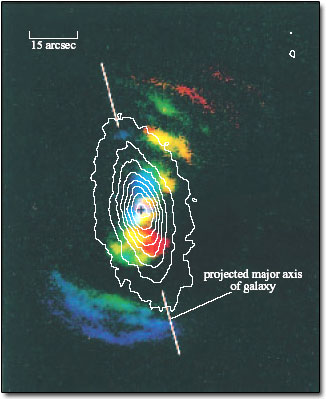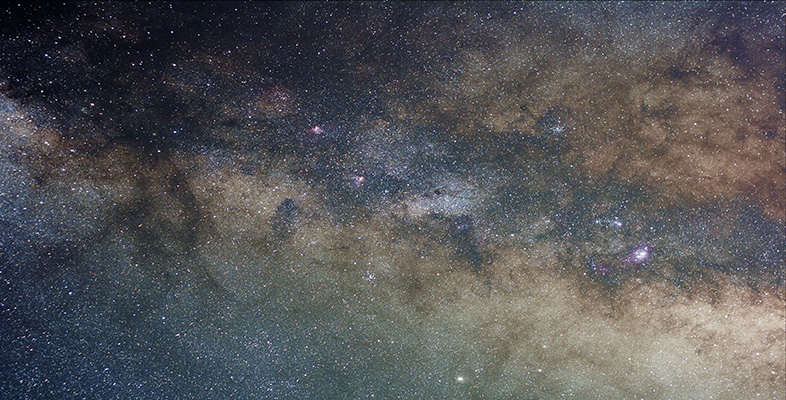Narrow-line region
The model places the narrow-line region much further out from the central engine where orbital speeds are lower; 200-900 km s−1 is typical for the NLR.
An important consequence of the NLR being outside the dust torus is that it is always in view, so narrow lines will be seen even if the broad-line emitting gas is obscured.
Question 13
The narrow-line region is the most extensive part of the AGN and envelops all the other components. Like the other parts, it is illuminated by the central engine. Bearing in mind the geometry of the dust torus, describe what the NLR might look like if a spaceship could get close enough to see it. From which direction would the observers have the best view?
Answer
The NLR is illuminated by radiation from the central engine. As the engine is partly hidden by the dust torus, radiation can only reach the NLR through the openings along the axis of the torus. Any gas near the plane of the torus lies in its shadow and will not be illuminated. The visible NLR would take the form of a double cone of light corresponding to the conical beams of radiation emerging from either side of the torus.
The best view would be from near the plane of the torus, where a wedge-shaped glow would be visible on either side of the dark torus.
So the model predicts that the NLR, if we could see it, would have a distinctive shape. You might think that such observations would be impossible, considering the tiny size of an AGN. But the NLR is the outer part of the AGN and has no real boundary. In fact, several NLRs have been imaged by the Hubble Space Telescope and one example, for the Seyfert galaxy NGC 5252, is shown in Figure 35.

The double wedge shape reveals where the gas is illuminated by radiation shining from the centre of the torus. In this case the emission extends several kiloparsecs from the AGN and is known as an extended narrow-line region. The extended region is simply interstellar gas ionised by the radiation from the engine. This observation, and others like it, provides supporting evidence for the geometry of the dust torus and the NLR.
So even if we cannot observe the inner structure of an AGN, the regions around the nucleus are tantalisingly consistent with the model.
